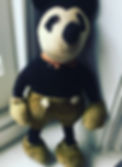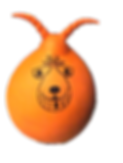


Star Wars

Star Wars (1977) was the first film to successfully mass market toys based on the movie. In fact, they were so successful that George Lucas independently used the funds to finance the next two movie chapters, The Empire Strikes Back (1980) and Return of the Jedi (1983).
George Lucas had been so sure of his film franchise idea and his vision of kids playing with the toy equivalents of his creations, he had sacrificed $500,000 of his directing fee to retain the merchandising rights.
With these, he had secured a manufacturing deal with Kenner, but even Lucas couldn’t have forseen the success that followed. In 1978 and 1979 Kenner’s sales of Star Wars toys reached $100 million.
Bought by Hasbro in 1991, financial records showed that by 2007, Star Wars toys alone had created $9 billion in profits, and along the way raised a new benchmark for the way merchandise was created.






Film Toys

In 1922 Mary Pickford, the Hollywood film star, decided to invest $25,000 in setting up a factory to manufacture dolls in her own likeness. The resulting Mary Pickford doll was one of the first of a long line of promotional toys and dolls inspired by popular stars of the silver screen.
The list grew year by year; Felix the Cat, Charlie Chaplin, Baby Betty, Jackie Cogan, Buster Brown, Shirley Temple, Mickey Mouse and all the Walt Disney Characters.
There was also a market for dolls and toys based on well-known books and cartoon characters. Advertising promoted the product , the product in turn promoted the book or personality from which it derived.
Promotional toy production assumed a mass market and catering to this required mass production methods. Many small firms were unable to compete and only the larger and more efficient survived to become even larger and more efficient.




Hamleys

'Hamleys, England' was and probably still is a sufficient address for letters or postcards to reach London's largest and best known toyshop.
Hamleys is the oldest and in 1994 was the largest toy shop in the world. It is named after William Hamley, who founded a toy shop called "Noah's Ark" at No. 231 High Holborn, London, in 1760. Ownership of the shop passed through the family, and by the time it was operated by Hamley's grandsons in 1837, the store had become famous, counting royalty and nobility among its customers
Hamleys suffered a downturn through the 1920s and closed, going into receivership, in 1931. After ensuring that it would not alienate their suppliers, the Lines Bros toy company, Hamleys' largest creditor, purchased the company and reopened the Regent Street store by the end of that year, keeping it largely independent.







1970's toys

The space hopper was invented by Aquilino Cosani of Ledragomma, an Italian company that manufactured toy rubber balls. He patented the idea in Italy in 1968, and in the United States in 1971. Cosani called the toy "Pon-Pon".
Space hoppers were introduced to the United Kingdom in 1969. The space hopper became a major craze for several years and remained widely popular through the 1980s. The toy is sometimes considered a symbol of the 1970s.
The original space hopper in the United Kingdom was manufactured by Mettoy.
Simon is an electronic game of short-term memory skill invented by Ralph H. Baer and Howard J. Morrison, working for toy design firm Marvin Glass and Associates, with software programming by Lenny Cope.
The device has four coloured buttons, each producing a particular tone when it is pressed or activated by the device. A round in the game consists of the device lighting up one or more buttons in a random order, after which the player must reproduce that order by pressing the buttons. As the game progresses, the number of buttons to be pressed increases.
Simon is named after the simple children's game of Simon Says, but the gameplay is based on Atari's unpopular Touch Me arcade game from 1974.



1980's toys

Eighties Era Toys include My Little Pony, Transformers, Star Wars Figure Set, Pound Puppies, Lego, Barbie, Weebles House at Pooh Corners, Dukes of Hazzard, Talking Alf, Huggable Glo-Worm, Matchbox Car Sets, Verbot, Ghostbusters Table-top Pinball, Omnibot 2000, First Sony CD Player, Pac-Man and Frogger Tabletop Arcade Games, Atari 5200, Sega Genesis and many more.
As technology boomed and advanced by great strides in the 1980's, computerized toys became more advanced and simple robots became highly popular. Marketing geared towards children became more and more common too, as companies developed new cartoons in order to specifically market towards the young viewers (Transformers, Rainbow Brite, Care Bears, and more).
Video games also became more popular and more advanced as the decade progressed and more manufacturers threw their hats into the ring like Nintendo and Sega. Many popular toys were also very expensive as the economy boomed during the decade when excessive displays of consumption became the name of the game.




Rubik's Cube

The Rubik's Cube is a 3-D combination puzzle originally invented in 1974 by Hungarian sculptor and professor of architecture Ernő Rubik.
Originally called the Magic Cube the puzzle was licensed by Rubik to be sold by Pentangle Puzzles in the UK in 1978, and then by Ideal Toy Corp in 1980 via businessman Tibor Laczi and Seven Towns founder Tom Kremer.
The cube was released internationally in 1980 and became one of the most recognized icons in popular culture. It won the 1980 German Game of the Year special award for Best Puzzle.
As of January 2009, 350 million cubes had been sold worldwide, making it the world's bestselling puzzle game and the world's bestselling toy. The Rubik's Cube was inducted into the US National Toy Hall of Fame in 2014.
The image below shows the prototype working model made of wood.
